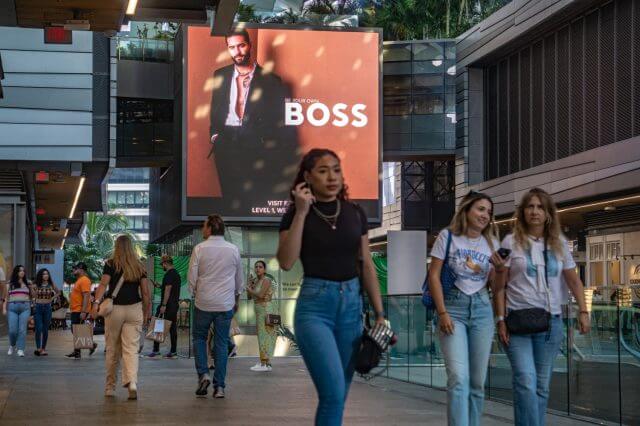For those of us who work in creative fields, developing the next generation of wearable tech, designing websites or working on the next ad campaign for the Halo franchise, we are inevitably dragged into brainstorming sessions: small groups assembled for the purpose of coming up with that singular killer idea that’s bound to win awards, sell products and propel careers. The goal of a good session is to generate mass quantities of high caliber ideas that answer a specific creative problem. When brainstorming works, we feel electricity, the buzz of the idea that could only have come into existence through collaboration. Frequently things go wrong, leaving many of us thinking the process is a waste of time. Why do brainstorms go wrong and what can we do get the most out of them?
Have clear objectives and be willing to throw them away.
Write a creative brief and outline goals and boundaries. This should be shared ahead of a session and the first thing that’s reviewed with the group. On occasion, wild ideas may be pitched in a session that don’t fit key criteria. Record all ideas and be open to coming back to review them with an open mind: it might be so good it’d be worth sharing with some caveats and an acknowledgement that it pushes the boundaries.
One moderator: The voice of encouragement.
A little bit of guidance goes a long way. Someone who has been in a lot of sessions, knows the pitfalls and can spin them into positivity, should guide the group through the brainstorm. Judgement of ideas is reserved for a later session, so the moderator’s goal is not to measure the success of ideas but to keep up momentum of the group, facilitate spring-boarding and make sure everyone’s voice is heard.
The Frankenstein.
So there are multiple ideas, why not mix them all together? This solution gives a little credit to each of the egos in the room, sharing in the glory of a patchwork concept. Most of the time, the ideas don’t go together and gives birth to a monster: a beast that doesn’t communicate a clear single message. I love kimchi, and I love icecream, but I’d never mix them together. If you feel the need to combine ideas, ask why. Is it the best answer to the creative challenge, or is the intent to make everyone in the room feel good? The show My Little Pony did a great little episode on this topic. Yes, I just referenced My Little Pony, and yes, I am a Brony.
That one guy who talks too much: Production blocking.
There’s always that one member of the group who talks 90% of the time. This kills productivity in a session. Good brainstorms allow for springboarding from person to person, idea to idea, this is impossible if only one person is talking. The moderator can jump in and ask those who are being quiet, “where does that take your mind?”
The naysayer is really bringing us down.
Some of us were born to create and some were born to destroy. The naysayer in the group will jump in after every idea proposal and say why it’s impossible. While the ability to critique ideas, ripping them apart for feasibility and creativity is important, there’s a time for it and it’s not in the session. The brainstorm needs to be a warm, fuzzy blanket of positivity to keep up creative momentum. The moderator CAN redirect positively when things deviate from the objectives by asking “how can we relate this to the brief more closely?” Critical review happens after the session, not in it.
Don’t judge me: Evaluation apprehension.
Some participants may be too embarrassed or scared to contribute. They may be worried their contribution won’t please their boss, or they might feel intimidated by that one guy whose idea always seems to win. Ideo’s Tim Brown gave a great TED talk on the topic, and offers some great suggestions on tapping into playfulness and child-like creative inhibitions. Encourage everyone to participate and welcome all ideas, even the bad ones. If something is half-baked, you can say, “this is half-baked and i need help developing this, but i like it because….” This encourages others to jump in and help shape and develop concepts.
The quiet storm: Social loafing.
If you’re thinking, “everyone in the room is killing it, why should i contribute, they’ve got this.” You are “social loafing.” A good moderator will try and pull everyone in. If you catch yourself in this mode, jump in and share wherever your mind is taking you.
Once a sessions wraps, we encourage everyone to go think some more, review notes and submit any follow up ideas. This is important because some people simply generate ideas better in a dark quiet room or at different times of day. If the goal is to create good ideas and lots of them, we like to allow for the right conditions based on individual needs.
When all of the ideas are collected, a few days later, bring a small group of key stakeholders back together to rip the ideas to shreds. This is a subtractive process. In the original brainstorm, the goal is to create and in the this review session, the goal is to destroy. Editing ideas down to just the few, the best, thinking about feasibility, production and development costs, the final step in the process.
Reference:
Alex Osborn, founding partner of BBDO Your Creative Power.
Tom Kelley, David Kelley, Creative Confidence: Unleashing the Creative Potential Within Us All
Howard Gardener, Creating Minds: An Anatomy of Creativity Seen Through the Lives of Freud, Einstein, Picasso, Stravinsky, Eliot, Graham, and Ghandi

